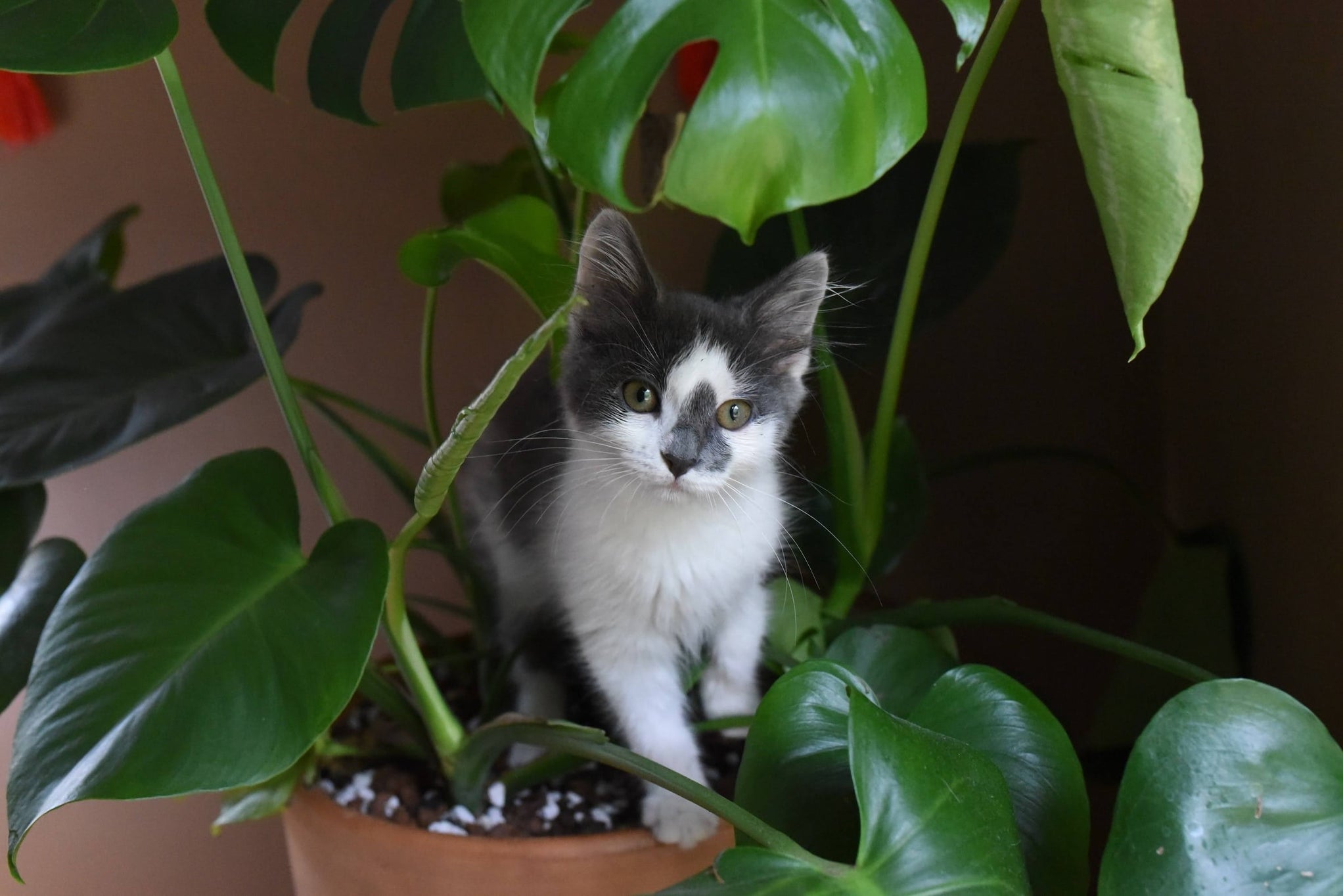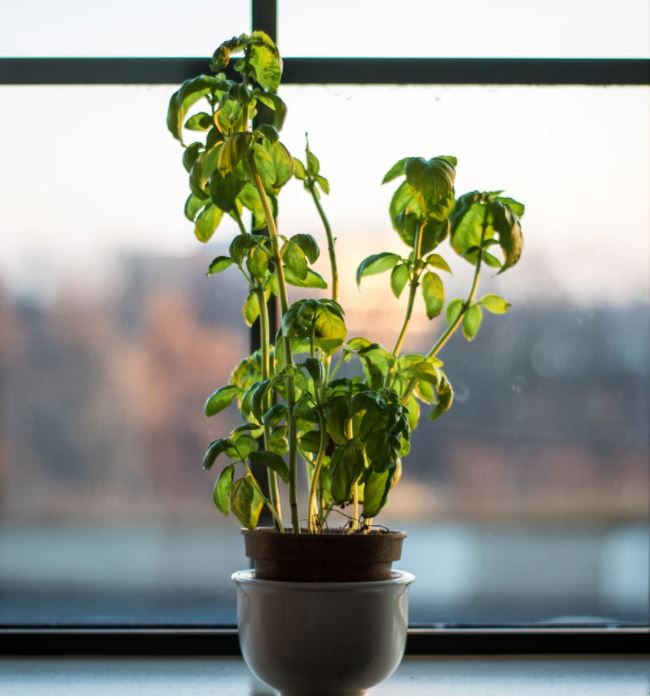Pet Safe Plants for Your Home and Your Table
Posted by Patricia Colomy on

Bringing plants into your home can help purify the air, add texture and beauty to your space, and even spice up your meals. But for pet owners, the zen of gardening can quickly turn to daily worry. Many indoor plants are toxic for pets, and even non-toxic plants can make your pet sick if they ingest too much.
For most dog owners, keeping a plant away from your pet is as simple as placing it out of their reach. But for cat owners, things get a little trickier, as a cat’s “reach” is typically more extensive than a dog’s. Growing cat-friendly plants might be your only defense against these agile daredevils.
Luckily, there’s a wide variety of pet-safe house plants to choose from and we’ve put together a list of our favorites for you!
Pet-Safe Plants for the Beginner
If you’re anything like me, your green thumb has more of a brownish hue. As a pet parent, I shine, but when it comes to plants, I lack that natural parental know-how that so many have. Fear not! This doesn’t mean we don’t get to enjoy a virtual indoor jungle. The following pet-safe plants can survive plenty of abuse from newbies like us:

Spider Plants are very tough and adaptable house plants that recover easily from “accidental” neglect. They prefer cooler to moderate temps (65°F-80°F), and bright indirect light, but will tolerate lower light conditions, too. When it comes to watering, keep the plants moist, but not soggy. Spider Plants actually prefer to dry out a bit between waterings, which is perfect for my attention span! This plant is listed as non-toxic for cats and dogs, by the ASPCA, but they are mildly hallucinogenic for cats and can cause tummy upset.
Calatheas are a wonderful indoor plant for beginners! Especially if you want something with wider and more colorful leaves. These plants flourish in medium to bright indirect light, but can tolerate low indirect light, as well. The comfortable temperature range for these plants is wide and falls between 65°F-85°F. Expect to water them once every 1-2 weeks, allowing the soil to dry out about half way down between waterings.
Tall Indoor Plants

Parlor Palms thrive in medium to bright indirect sunlight, but can also live in low indirect light, which makes them a good fit for almost any indoor setup. They only need watering every 1-2 weeks, depending on lighting conditions, and prefer moderate to high humidity. When it comes to temperature, 65°F-85°F degrees is the range for this plant. A good rule of thumb is: if you’re comfy, then your Parlor Palm is comfy!
Money Trees are great for indoor growing. They’re super resilient and live comfortably in a variety of conditions. They thrive anywhere from medium to bright indirect light and only need watering every 1-2 weeks. Plus, let’s face it, we all want to say, with all honesty, that we have a Money Tree growing at home (many a barroom bet would be won in our favor).
Sensational Succulents
When people hear the word succulent, their minds probably go to some form of prickly cactus, which doesn’t sound at all safe for curious cats and dogs. But succulents are easy-to-love plants that come in an immense variation of shapes and sizes. Take a look at a couple of our favorites:

Echeveria is rose-shaped succulent available in a wide variety of breathtaking colors and color combinations. Growing these little lovelies is practically foolproof! Because they're native to the desert, Echeveria thrive full light at least 4-5 hours a day, 65°F-80°F temperatures and prefer well-drained soil that’s allowed to dry between waterings.
Holiday (Christmas) Cactus is another pet-safe beauty that made it to the top of our list! Aptly named for their natural blooming pattern, which occurs during the holiday season. Like most succulents, they do best in bright direct light, warmer temperatures and don’t need much watering. Keep their soil airy and porous, watering only when completely dry, and they will thank you with lovely blooms just in time for the holidays!
Unique Plants
If you’re looking for a pet-friendly house plant with a little more pizzazz, check out these interesting and almost unbelievable plants.
Goldfish Plants bloom red, orange or yellow flowers that look just like - you guessed it - goldfish! If you haven’t see this plant before, google it immediately. I’ll wait… Isn’t it fun? This plant blooms best in bright indirect light, warmer temperatures and moderate to high humidity, so you may need to mist it daily. Goldfish Plants are safe for cats and dogs, but we can’t promise they will remain safe from cats and dogs. I mean, how many pets could possibly resist swatting or chomping at seemingly leaping goldfish?

Air Plants are a fascinating variety of plants that don’t require any soil to grow and rely heavily on the air around them for their nutrients. In nature, these plants are typically found growing on other plants and trees. They require appropriate light exposure and occasional water soaking or misting, depending on their conditions. Because they don’t need to be potted in soil, these charming little plants can be grown in an endless array of ornamental displays, even upside-down!
Yummy Pet-Safe Plants

Growing your own herbs and spices is a great way to feed your soul and your tummy. Many of these plants grow well indoors, which is convenient for you, but can also be very tempting for your pets. Here’s a list of delicious herbal house plants that are safe for cats and dogs!
- Basil
- Sage
- Cilantro
- Parsley and Dill (safe for cats and dogs in small amounts)
- Rosemary (safe for cats and should only be given to dogs in small amounts)
Although the plants and herbs listed in this blog are categorized as non-toxic for cats and dogs, pets should not be allowed to graze freely. Overconsumption of any plants can cause tummy upset, which makes for many messes and miserable pets.
If you suspect your clever little critter has eaten something forbidden, contact the Pet Poison Hotline by calling (855) 764-7661or visiting https://www.petpoisonhelpline.com/poisons/. You can also contact the ASPCA Animal Poison Control (APCC) 24-hour emergency poison hotline at 1-888-426-4435 or by visiting https://www.aspca.org/pet-care/animal-poison-control

